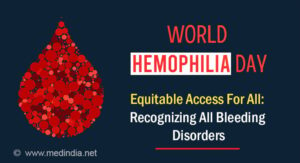NIMH » Consideration to Geometric Photographs Might Supply Biomarker for Some Toddlers with Autism

[ad_1]
Researchers are in search of measurable organic indicators, often known as biomarkers, that might assist determine youngsters with autism spectrum dysfunction (ASD) throughout the first few years of life—earlier than they’d sometimes obtain a prognosis. Establishing correct biomarkers might inform each analysis and scientific observe and assist enhance and develop early ASD screening efforts. A research supported by the Nationwide Institute of Psychological Well being means that visible consideration to dynamic geometric photos could supply one such biomarker for a subset of toddlers with ASD.
The research, led by Karen Pierce, Ph.D., on the College of California, San Diego, builds on earlier work by Pierce’s group exhibiting that some toddlers with ASD have a robust visible desire for geometric photos. That’s, when these toddlers have the choice to have a look at various kinds of photos, they spend a disproportionate period of time photos containing geometric shapes.
Pierce and colleagues hypothesized that this geometric desire is perhaps strong sufficient to function a biomarker for figuring out some younger youngsters with ASD. They designed a research to seek out out whether or not they might replicate their earlier findings in a bigger, extra various group of younger youngsters.
Notable for its massive pattern dimension, the research included 1,863 toddlers with a median age of about 2 years. The researchers recruited households to take part by means of group referral and population-based screening in well being care settings utilizing an method known as Get SET Early. After finishing in-depth diagnostic evaluations, the analysis group categorized the toddlers into distinct teams:
- Kids with ASD
- Kids with some options of ASD
- Kids with world developmental delay
- Kids with language delay
- Usually creating youngsters
The toddlers watched a 1-minute video that contained geometric photos on one aspect of the display screen and pictures of youngsters doing yoga on the opposite aspect of the display screen. The researchers used eye-tracking expertise to observe and measure what the toddlers checked out as they watched the video—the general proportion of time every toddler spent wanting on the geometric photos served as a measure of geometric desire. Particulars about this method, known as the GeoPref Check, and instance video clips can be found on the UC San Diego Autism Middle of Excellence web site.
The info confirmed that, general, toddlers with ASD spent comparatively extra time geometric photos, and a few youngsters with ASD fixated on the geometric photos greater than 90% of the time. In distinction, toddlers within the different teams—youngsters with world developmental delay, youngsters with studying delay, sometimes creating youngsters, and sometimes creating youngsters who had siblings with ASD—confirmed a desire for the photographs with youngsters.
When the researchers examined the information from toddlers with ASD, they discovered that their visible preferences had been related to their scientific measures. Particularly, toddlers with ASD who strongly most popular geometric photos additionally had increased symptom scores, decrease cognitive potential scores, and decrease adaptive habits scores than toddlers with ASD who strongly most popular photos exhibiting youngsters.
The researchers discovered that their easy measure of geometric desire—proportion of time spent geometric photos—precisely distinguished toddlers with ASD from toddlers with out ASD with few false positives.
Extra knowledge recommended that geometric desire remained secure over the 12 months following the preliminary eye monitoring session. Utilizing fashionable bioinformatics strategies, the researchers confirmed the statistical robustness of their findings.
In response to Pierce and colleagues, the research exhibits that the geometric desire measure can function an goal, correct, and dependable biomarker of an ASD subtype.
The truth that the geometric desire measure was correct in a big, various, community-based pattern that included toddlers with non-ASD developmental delays suggests the measure could have use in real-world scientific settings and in analysis. If validated in additional research, this measure could supply a low-cost, scalable instrument for screening and identification that might assist some toddlers with ASD obtain earlier prognosis and entry to providers.
Extra analysis analyzing the mechanisms, together with attainable genetic hyperlinks, that drive preferences for geometric photos can assist researchers higher perceive variation amongst youngsters with ASD.
Reference
Wen, T. H., Cheng, A., Andreason, C., Zahiri, J., Xiao, Y., Xu, R., Bao, B., Barnes, C. C., Arias, S. J., & Pierce, Ok. (2022). Giant scale validation of an early-age eye-tracking biomarker of an autism spectrum dysfunction subtype. Scientific Stories, 12, Article 4253. https://doi.org/10.1038/s41598-022-08102-6
Grants
[ad_2]
Source_link






